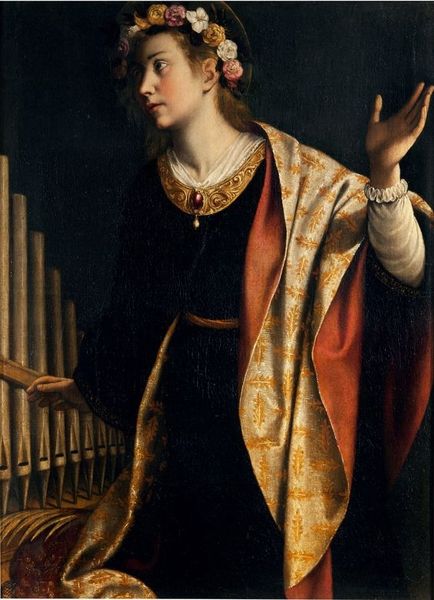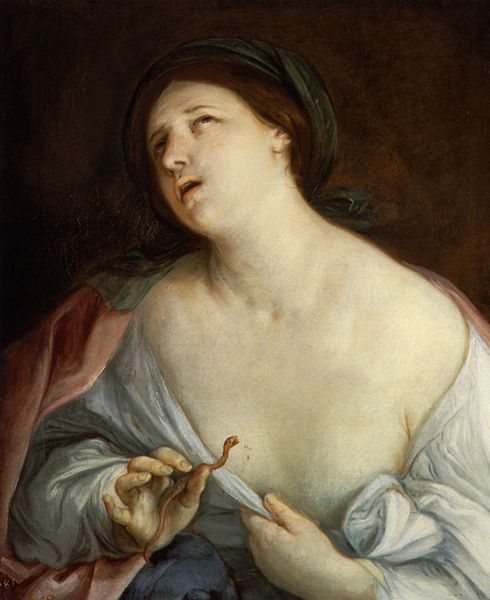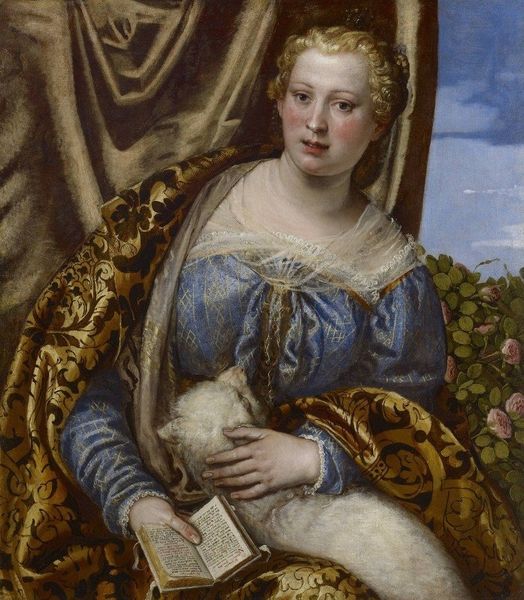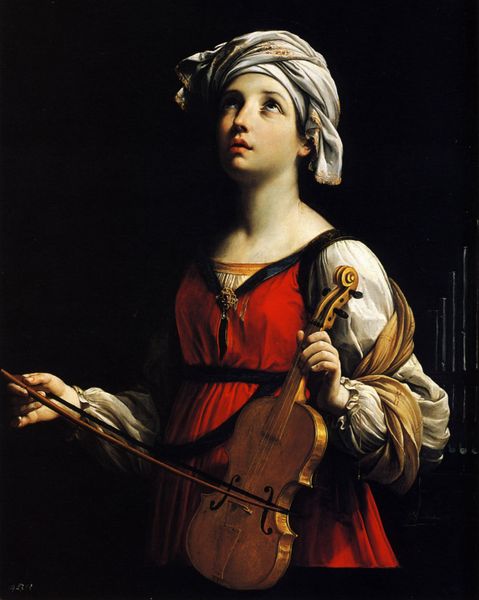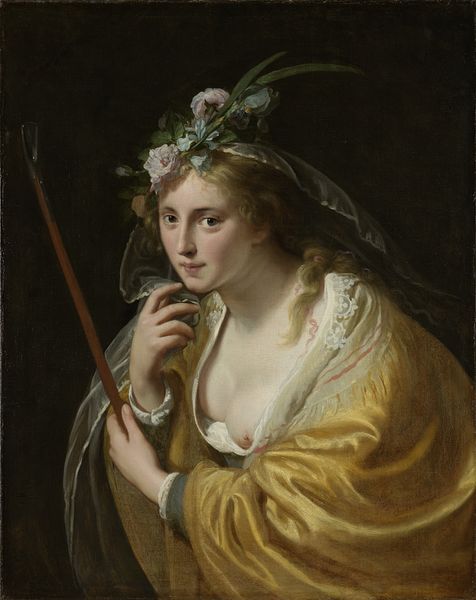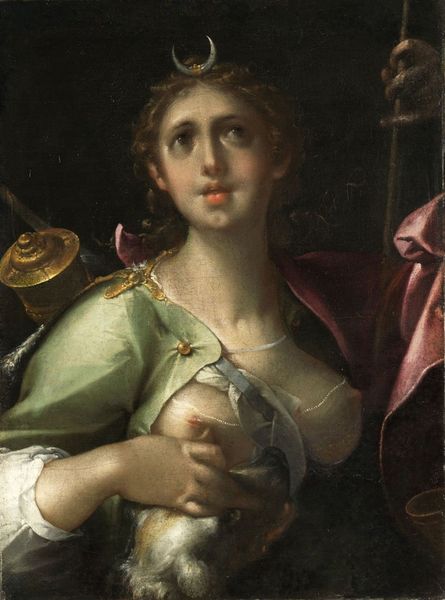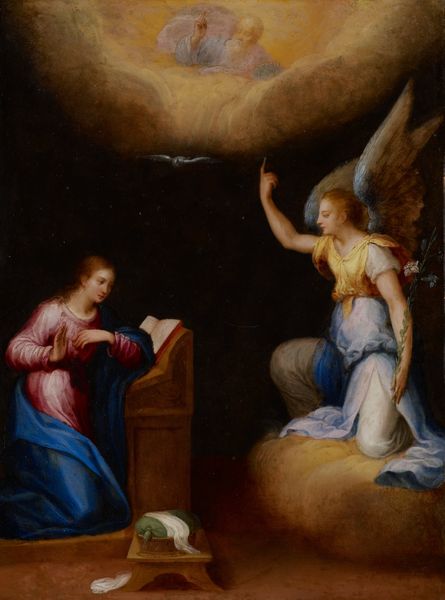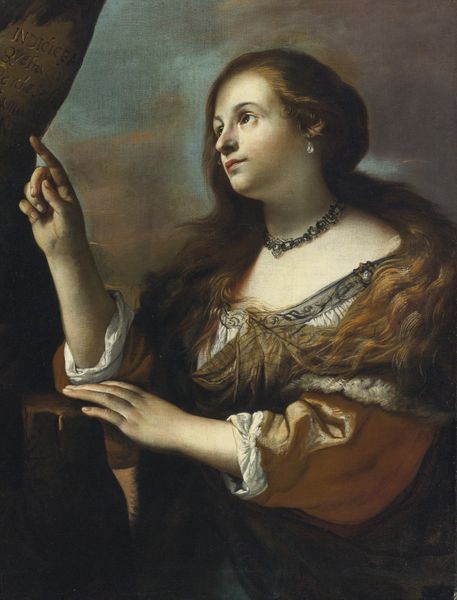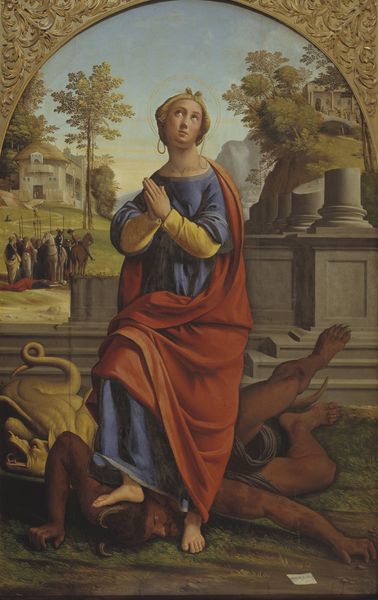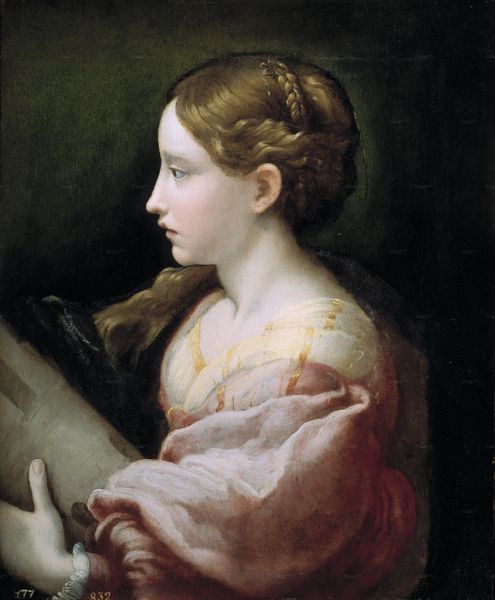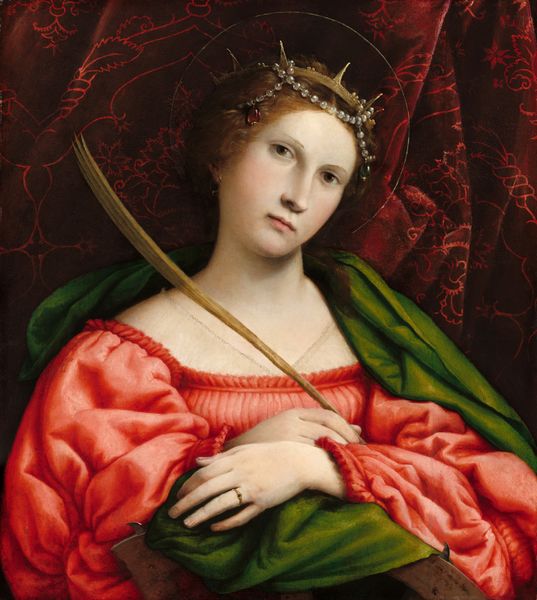
painting, oil-paint
#
portrait
#
allegory
#
baroque
#
painting
#
oil-paint
#
history-painting
Copyright: Public domain
Curator: Let's turn our attention to Sassoferrato's "Saint Cecilia," painted around 1650. Cecilia, as you likely know, is the patron saint of music. Editor: My initial impression is one of serenity and piety. There's a gentle, almost ethereal quality to the painting. It feels both reverent and intimate. Curator: Indeed. The choice to depict her gazing upward, almost transported, invites consideration of the historical context. The Catholic Reformation heavily influenced artistic representation. Cecilia here embodies ideal virtue, a beacon of faith presented to counter Protestant iconography. Consider, too, the prevalent socio-political function of art in that period, the didactic mission reinforcing Catholic doctrine through carefully composed images. Editor: The contrast between the earthly Cecilia, adorned with her expensive broach, and her ethereal, heavenly gaze strikes me. Her expensive dress implies worldly privilege. It prompts interesting questions about how sainthood, and perhaps religious devotion in general, can intersect with class and status. It seems that the only role this kind of virtue may take is in the appearance, maybe something for performative spirituality only? Curator: That’s a fair point. The depiction underscores the performativity inherent in sainthood, but also touches upon the patronage systems. Often, wealthy donors funded such commissions, seeking both to venerate saints and, of course, to promote themselves. Saint Cecilia served not only as an ideal but also as a representation of the patron's piety and good taste, perpetuating certain elite narratives of power and piety. Editor: Right. The visual construction almost feels strategic. The artist utilizes dramatic lighting to create emphasis, specifically casting the score and organ pipes in a soft luminescence which contrasts her dress as an almost vulgar show-off in color compared to other paintings on display. Curator: Precisely. Ultimately, studying Sassoferrato’s “Saint Cecilia” provides insights into the era's complex interactions of art, patronage, and religious doctrine. Editor: It makes me think a lot about the ways we perceive devotion, performance, and perhaps class through our art today. It offers a lens through which to critique the visual and material cues of identity.
Comments
No comments
Be the first to comment and join the conversation on the ultimate creative platform.
